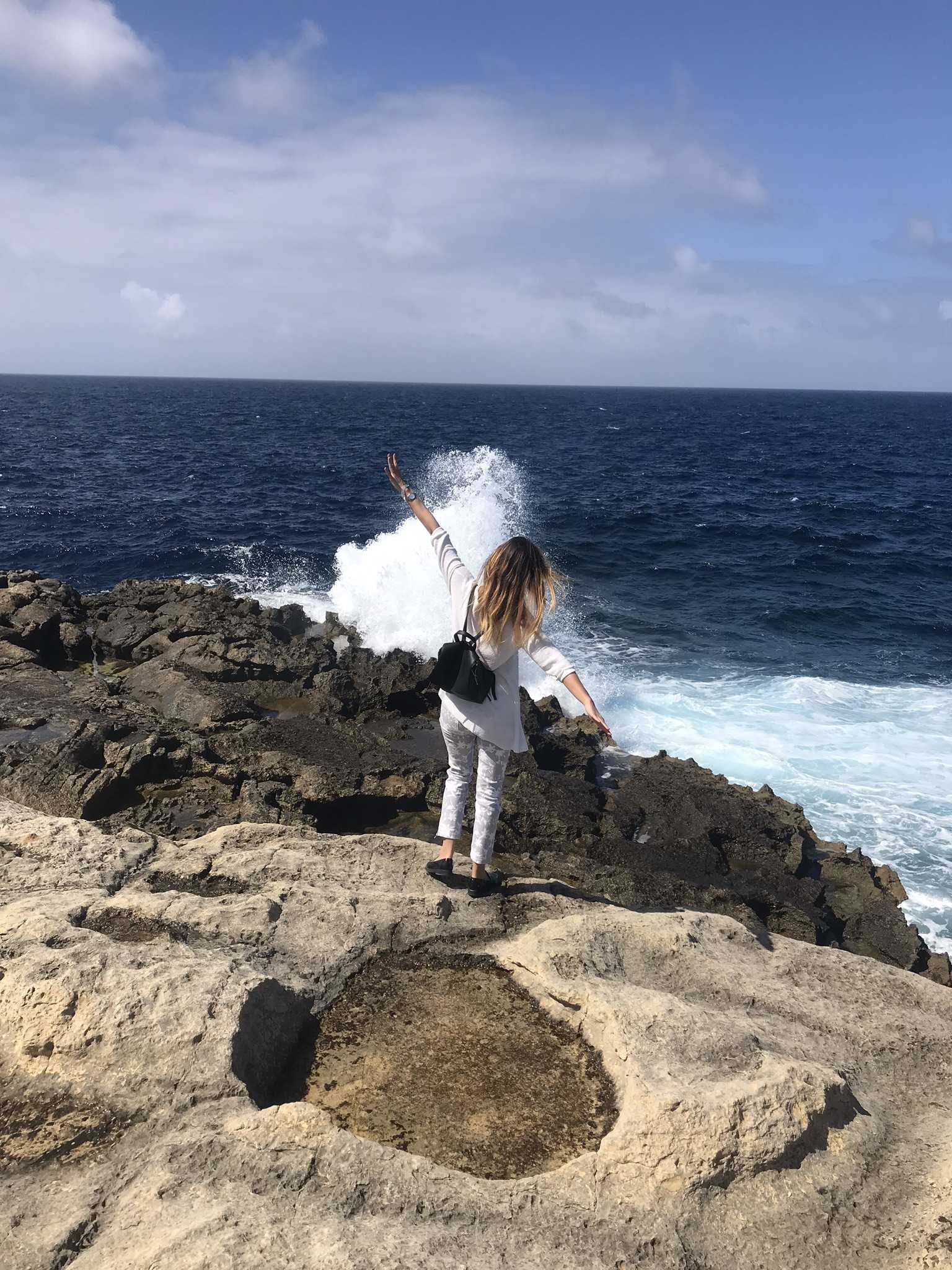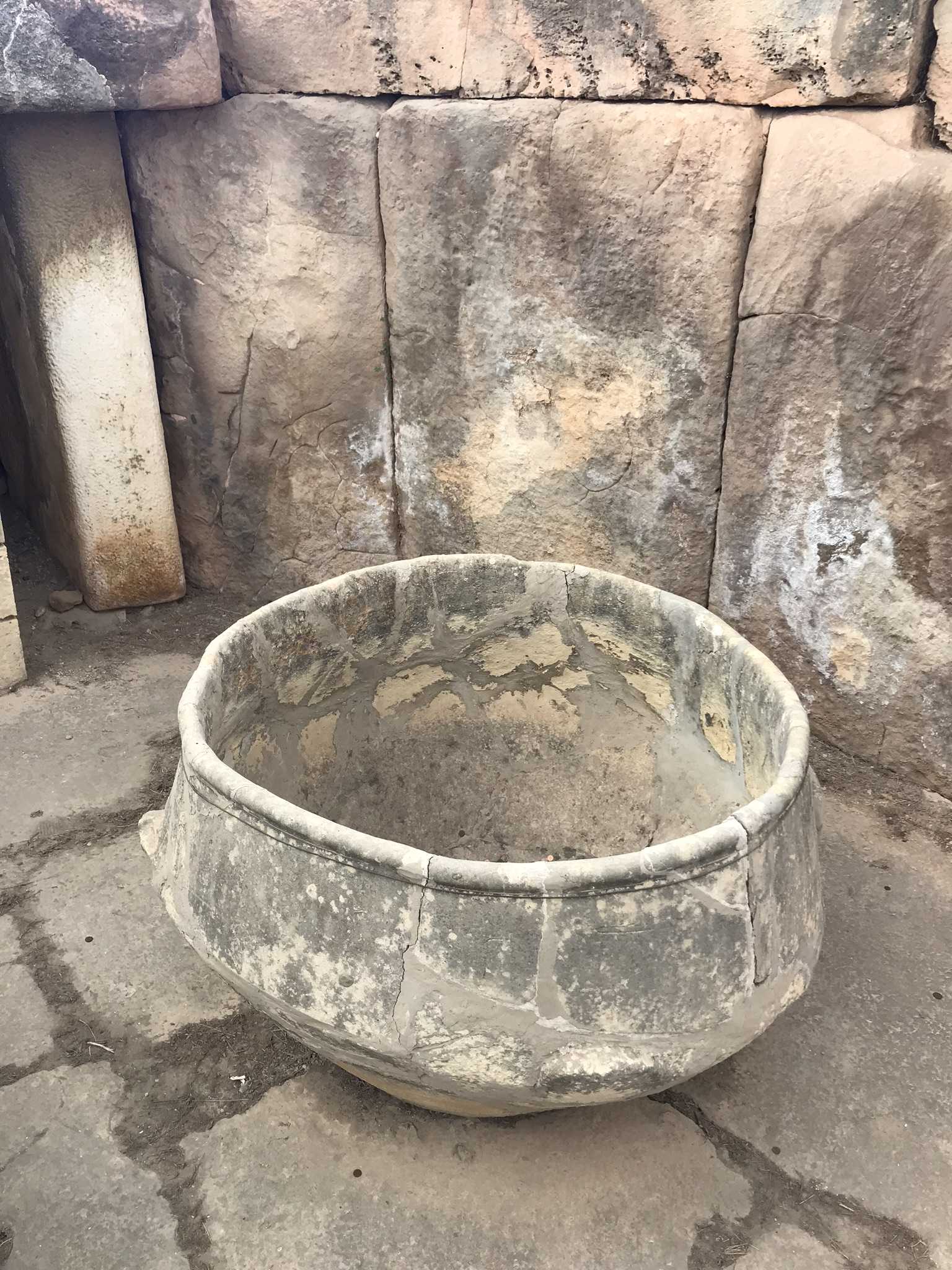It is said that anyone who has not seen the island of Gozo has seen nothing in Malta. I would argue with that, but the fact Gozo, called an island of joy, is one of the pearls of the Mediterranean. I escaped from Hungary to Malta, whose name reminds most people of the crusaders or the Order of Malta. For me, this list has since been supplemented by complications around left-hand traffic and double roundabouts, which made me anxious in the very first moments.
However the island is relatively small, 316 km2, but if you want to see a lot in a short time, it is definitely recommended to rent a car. Fortunately, after a few hours of driving, the initial shock subsided and I was able to enjoy the panoramic view and green scenery in front of me. Despite its rocky terrain, Malta is a very refreshing sight in the spring, and the roads are paved with many flowers. When I saw them if felt like a child again and couldn’t stop picking at least a bunch of them.
The only way to get to Gozo by car is by ferry, which can absorb more than 100 vehicles and operates every half hour between the islands. The 100-foot-long monstrosity caused some trouble, as the car was not where I left it, but the café and lookout terrace on board made up for this inconvenience. Approaching the island of Gozo, which is only 14 km long, you can see the stunning panorama of Mgarr. The island’s present name, which means joy in Spanish, was given to it by the invading Castiles in 1282, but it had been inhabited for thousands of years before. Probably our ancestors were greeted by a different sight than the Lourdes Chapel on top of the hill and famous for its apparitions, with a unified settlement of sandstone beneath it, but the natural beauties of the island are indisputable to this day.
Unfortunately, I could no longer see the island’s best-known formation, the Azur Window, an arched cliff over the sea, which collapsed in 2017 due to erosion. As a diver, I could still see the remains of the former rock underwater, along with the submarines that sank in World War II, but the weather wasn’t exactly ideal in March for diving. However, the absence of the arch did not spoil the experience of walking on the beach, where I listened for at least two hours to the sound of waves slamming into the rock and the roar of the sea in the morning sun. In the meantime, I admired the plants that were breaking down their petals among the rocks, which, in defiance of the wind and saltwater, proudly proclaimed that spring was here. Even though life can’t be stopped, it’s going to make its way everywhere.
Although life disappeared from the island of Gozo for sometimes inexplicable reasons, it reappeared after a short rest. These mysterious examples are the ruins of Ggantija, the second oldest free-standing structures of human hands (the first being the Turkish Gobekli Tepe). Each of these epithets is quite chatty in itself, but if I might add that these temples were built more than 1,000 years earlier than the Pyramids of Egypt or Stonehenge in England, you can imagine how prosperous and developed life once existed here. Before our time, the megalithic culture began in Malta around 3600, the memory of which is preserved in addition to Ggantija by five other churches (Ħaġar Qim, Mnajdra, Ta’ Ħagrat, Ta’ Skorba and Tarxien) and together they belong to UNESCO World Heritage Sites.
The temples, which exceed seven meters in height, were built of coral limestone and in one piece. For me, it assumes an amazing performance, how these giant stones reached the top of a mountain from the coast 10 km away. Although scientists say the transport was probably solved with stones used as rollers that were found not far from the site, it’s still a miracle for me. The temples used to be covered, and the altars and tools inside suggest that they were not necessarily just religious places, but also ritual ones for everyday life. In addition to Ggantija, I had the pleasure of visiting another monolithic church, Tarxien, from which I also brought you a selection of pictures.
The Maltese church civilization era was not only architecturally very advanced, but probably socially too, since there had to be a larger group of people who controlled the construction operations and the craftsmen, who could raise buildings this size without any binder. To this day, there is a mystery as to how and why such an advanced civilization and culture that raised a multitude of temples on the island disappeared in 2500 A.D. Various theories have come to light that people living here have left their residence for external attacks, environmental changes, or other reasons. In any case, the fact is that after 2500 A.D., no archaeological finds were found that could be linked to the temple-building, megalithic culture.
Jumping in the future, precisely 3,000 years, a new important era started flourishing on the island of Gozo. A fortress was built on a mountain in the middle of the limestone platform to make most of the island visible, including the coast. This high-ground, like the Hungarian fortress on Gellért Hill, bears the name Cittadella, which actually refers to a citadel. However, the Cittadella in Malta is 300 years older than ours; and with its narrow alleys, churches, and charming yellow limestone buildings, it has still faithfully preserved its former medieval character over the centuries. Unfortunately, several earthquakes hit the area, the last time in 1963, which damaged many buildings within the fortress walls. Since then, restorations have been ongoing, with traces of this happening on the city’s territory. Fortunately, the process was quite a boost when UNESCO put the fort on a World Heritage List in 1998, but the final recognition is yet to be given.
Today, the Citadel plays the role of national heritage along with its cathedral, episcopal palace, court, remaining apartment buildings and is mostly home to museums and outdoor events. It’s also a place for super cafes, which when you’re there, you have to try out. There’s nothing cozier than drinking a coffee on the terrace accompanied by a delicious cake. Or walk around the walls of the old city, admire the panorama of the island and start dreaming. Because dreaming is a good thing. And believing in something is even better. For example, I always believed that I would recover from my illness (read here) and will have a new, wonderful life ahead of me. Roaming the island and seeing all the natural, historical wonders, I feel like the universe has listened to my prayers. Gozo has become an island of joy for me, too.

































